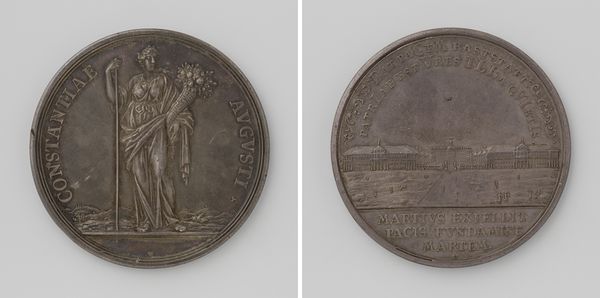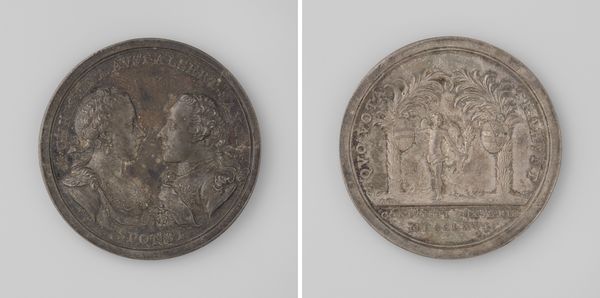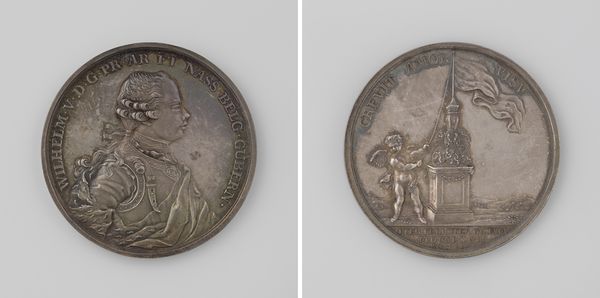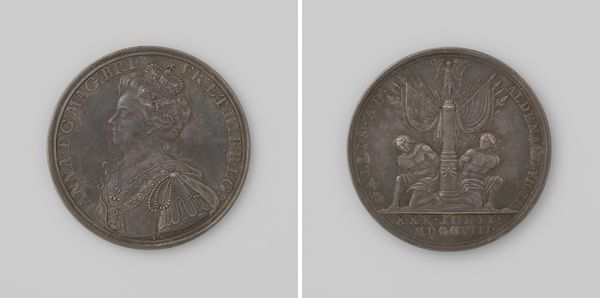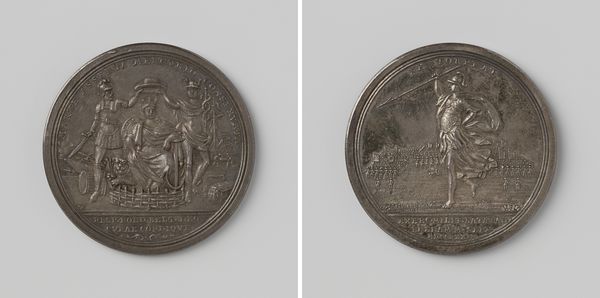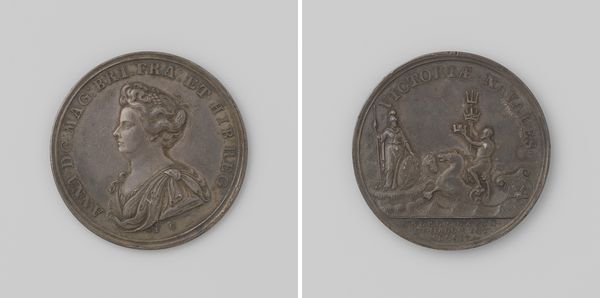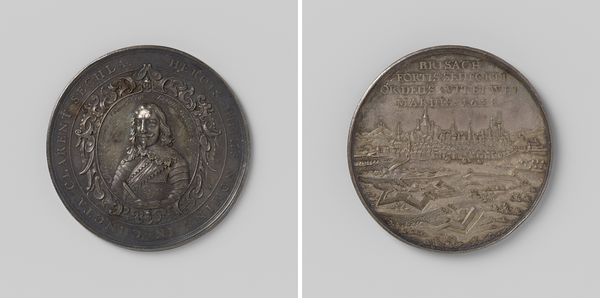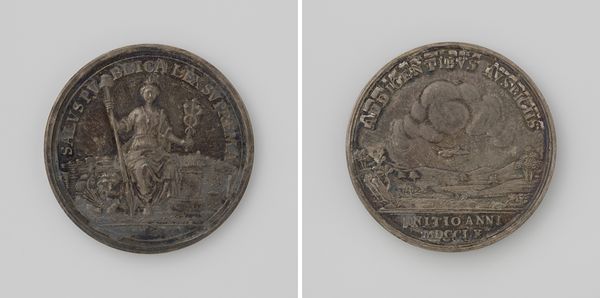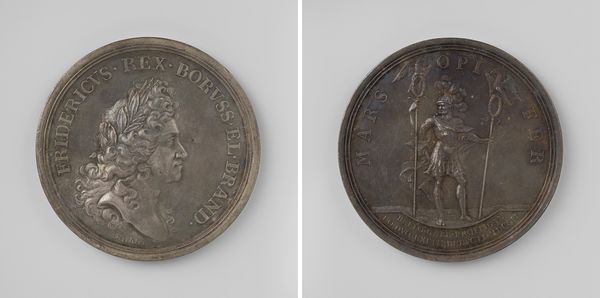
print, metal, relief, sculpture, engraving
#
portrait
#
baroque
# print
#
metal
#
sculpture
#
relief
#
sculpture
#
engraving
Dimensions: diameter 5.7 cm, weight 82.98 gr
Copyright: Rijks Museum: Open Domain
Editor: Here we have a metal print from 1701 commemorating the "Entry of Philip V, King of Spain, into Madrid." At first glance, it has a rather stately, almost serious tone, but also quite intricate! What’s your read on a work like this? Curator: Intricate is a fantastic word for it, because each side really invites a meditation, doesn’t it? The front side, for me, suggests a moment frozen in time—that poised figure and bust hint at something beyond the obvious… Do you get that sense, too, that the artist is speaking about something more than just a historical event? Editor: Yes, definitely. There is a symbolic dimension to the imagery. The bust in the back appears to be the King and the other woman seems to be holding a globe! I wonder what that signifies, if anything? Curator: Right. The globe whispers of power, doesn’t it? And I can't help but feel the image suggests that true authority comes through something more ephemeral. What is suggested by the latin phrases, like “Quod Deus conjunxit homo non separet?" Is there a connection to the other side of the artwork? Editor: Wow! Latin. Roughly, if my translation skills serve me, that means, "What God has joined, man must not separate?" Intriguing in itself. The second side includes a tree with something hanging from a branch - that certainly feels very separate to the King. Curator: Yes, precisely, this symbolism is meant to deepen our sense of the work - especially as the phrase seems to read “Divisum non dissecetur," as though things divided may come undone or broken completely. Editor: Interesting! So maybe the two sides work as a cohesive commentary about what helps a kingdom stay whole? Curator: I believe so. It feels like a plea or warning, hidden within what might seem like a mere celebration of royal power. This piece almost transforms from celebration to cautionary tale! Editor: Well, I'll certainly look at celebratory Baroque art differently from now on. I suppose you can’t judge a coin by its surface glint alone! Curator: Indeed. What looks shiny often conceals an element of solemn warning or deeper rumination.
Comments
No comments
Be the first to comment and join the conversation on the ultimate creative platform.
